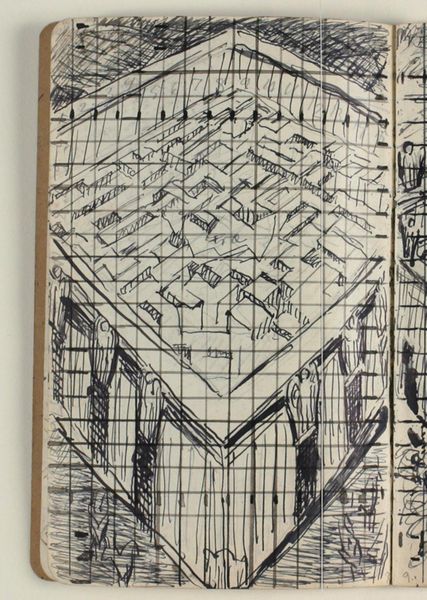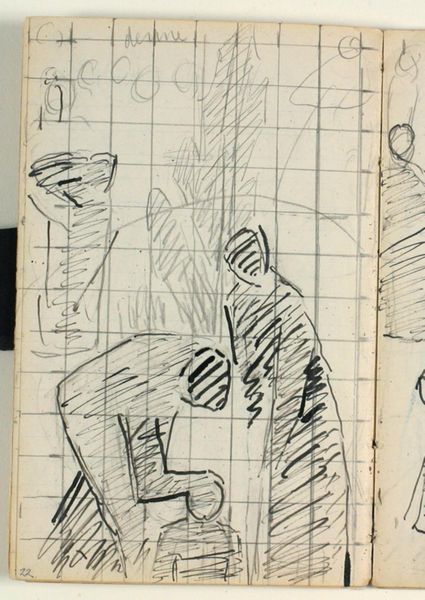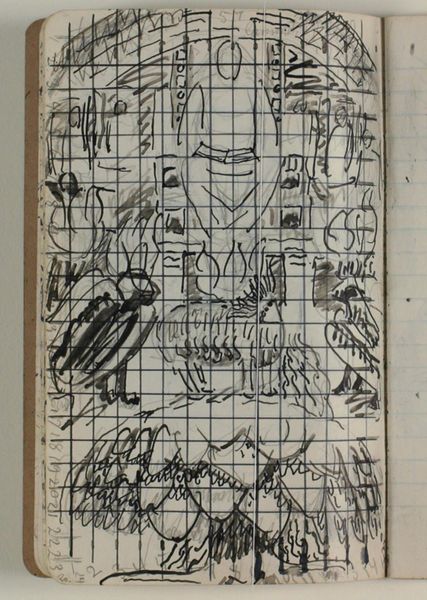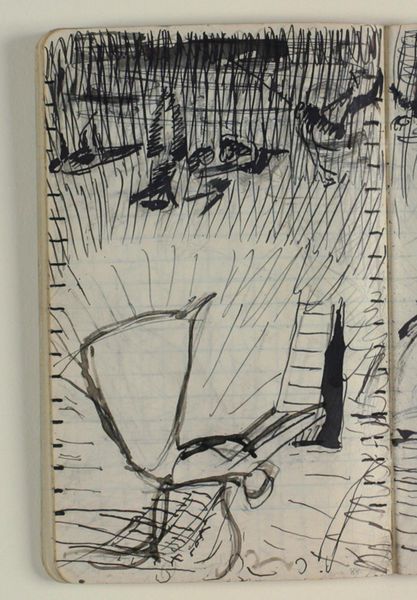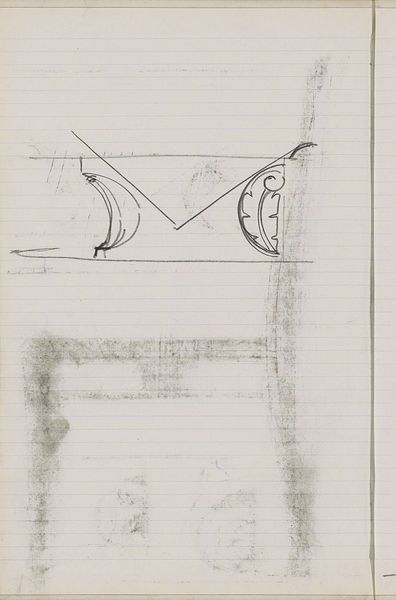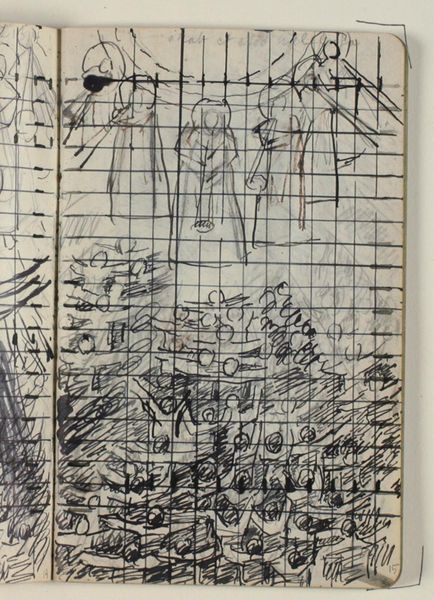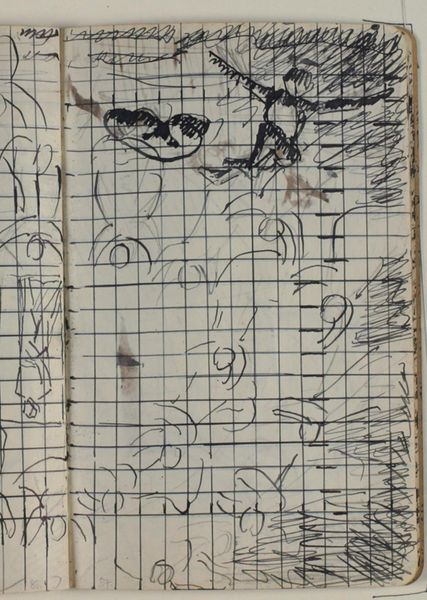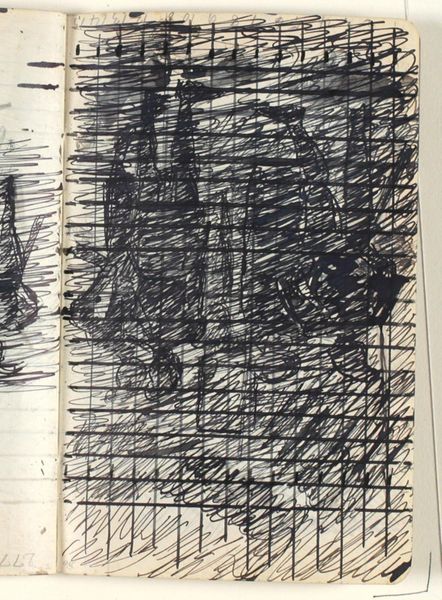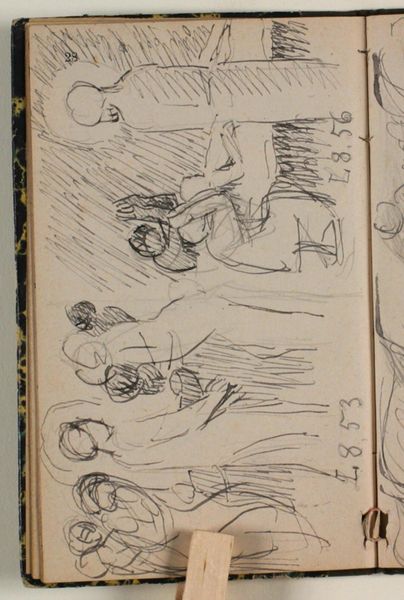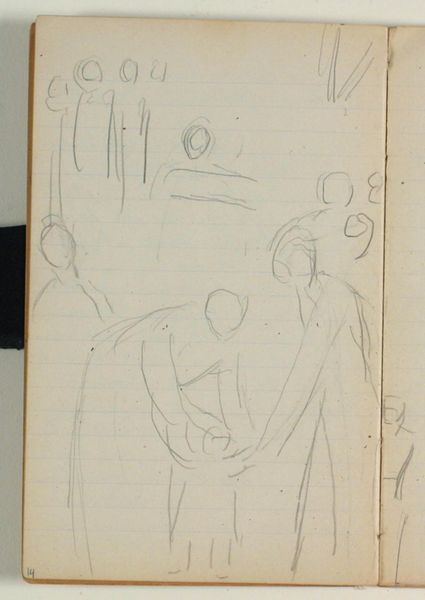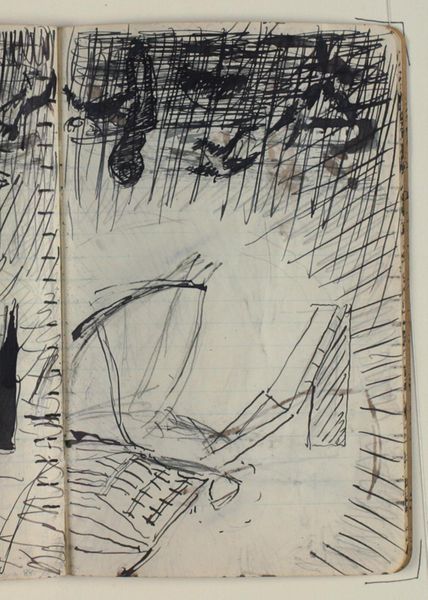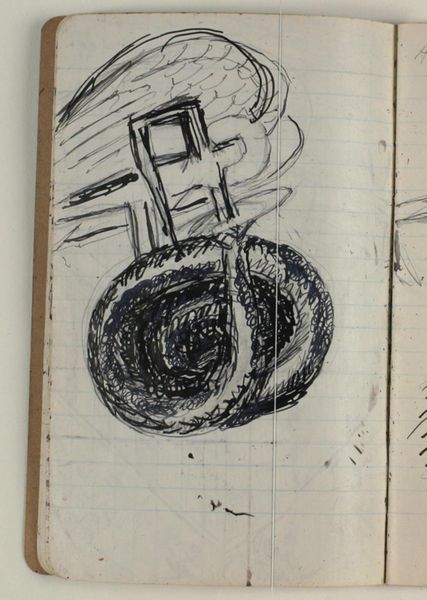
drawing, paper
#
drawing
#
paper
#
geometric
Dimensions: 175 mm (height) x 109 mm (width) (monteringsmaal), 175 mm (height) x 109 mm (width) (bladmaal)
Curator: This sketch is called "Det store Halleluja" – "The Great Hallelujah" – created by Niels Larsen Stevns between 1933 and 1934. It is a drawing on paper currently held here at the SMK. Editor: It’s immediately striking… this raw, almost frenzied energy. It feels unfinished, like a glimpse into the artist’s process. Is it religious imagery? The geometric figures… they appear to be holding instruments above this dark chaotic mass of markings below. Curator: Yes, Larsen Stevns was deeply engaged with religious and spiritual themes. It's a sketch, and so it represents a preliminary stage in a larger, unknown project. The grid that structures the page, the almost childlike renderings of figures holding instruments, all give us insight into Stevns’ labor. What materials did he have at his disposal, what tools allowed this expression? Editor: And that underlying grid emphasizes the precariousness of structure itself. Considering the period, I immediately think about the rise of authoritarianism in Europe. Is he hinting at how easily social order can descend into chaos? The figures above are so detached, literally hanging in the balance… like a broken choir whose voices no longer carry the weight they should. The darkness is almost consuming them. Curator: The use of humble materials also pushes the definition of high art. The paper’s limitations, the very simplicity of line, emphasize the materiality of the work and also the constraints Stevns faced. What materials are accessible and how can we extract meaning from these objects? Editor: And yet it powerfully conveys that feeling of unrest. Considering the artwork's social context, it perhaps speaks of impending violence and despair. There are echoes of past conflicts too. The sketch itself has a rough-and-ready quality, but maybe Stevns employed that stylistic form deliberately in order to emphasize societal tension. Curator: Indeed. Perhaps his deliberate use of such a common medium allows him a mode of expression unencumbered by artistic rules? Editor: It all contributes to its unsettling beauty. This dialogue between chaos and control, hinting at wider anxieties beyond art itself. It feels deeply relevant even today, doesn't it? Curator: It encourages us to consider Stevns’ artistic decisions in the broader social picture in which he was situated as an artist and individual. Editor: An extraordinary glimpse into the turbulent interwar years!
Comments
No comments
Be the first to comment and join the conversation on the ultimate creative platform.


